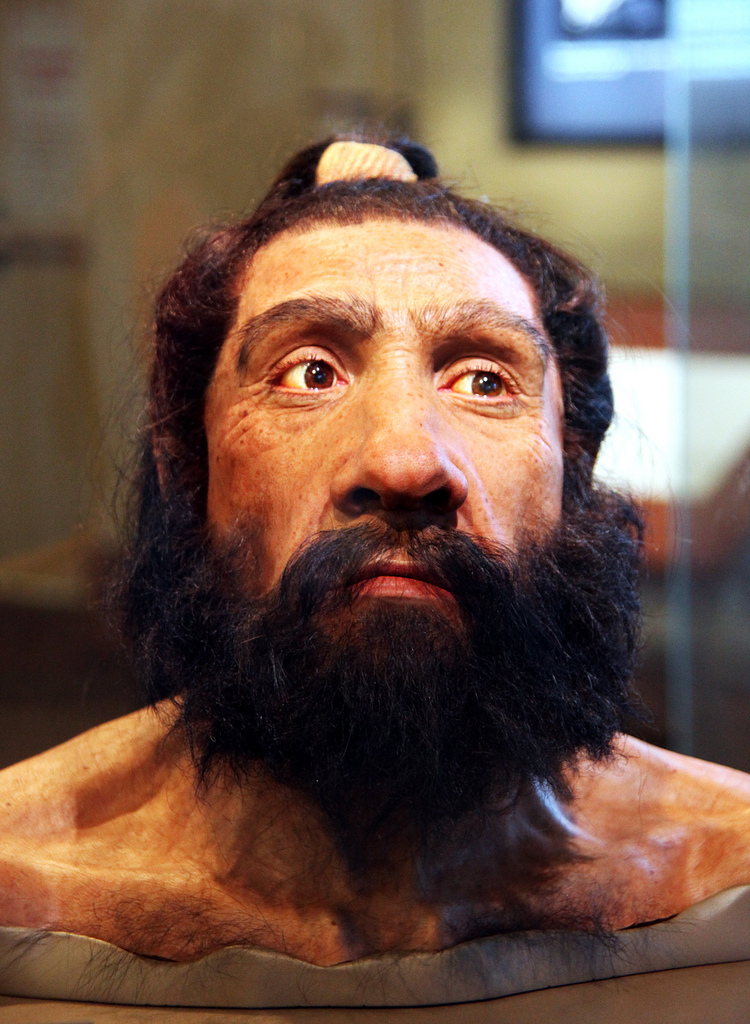National
Ancient DNA Reveals How Europeans Developed Light Skin and Lactose Tolerance


Homo neanderthalensis adult male – head model – Smithsonian Museum of Natural History (Tim Evanson/Flickr/CC BY-SA 2.0)
Daniel Zadik, THE CONVERSATION
(TheConversation.com) — Food intolerance is often dismissed as a modern invention and a “first-world problem”. However, a study analysing the genomes of 101 Bronze-Age Eurasians reveals that around 90% were lactose intolerant.
The research also sheds light on how modern Europeans came to look the way they do – and that these various traits may originate in different ancient populations. Blue eyes, it suggests, could come from hunter gatherers in Mesolithic Europe (10,000 to 5,000 BC), while other characteristics arrived later with newcomers from the East.
About 40,000 years ago, after modern humans spread from Africa, one group moved north and came to populate Europe as well as north, west and central Asia. Today their descendants are still there and are recognisable by some very distinctive characteristics. They have light skin, a range of eye and hair colours and nearly all can happily drink milk.
However, exactly when and where these characteristics came together has been anyone’s guess. Until now.
###










































